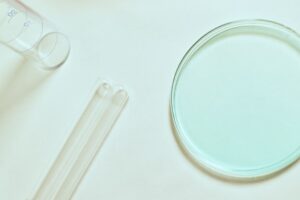Introduction
Autoclaves are the backbone of sterilization in microbiology, medicine, and many industrial processes. A 2024 survey by the International Association for Healthcare Central Service Materiel Management (IAHCSMM) reported that over 90% of clinical laboratories rely on steam autoclaves for routine decontamination.
Key Autoclave Parts and Their Functions
| Part | Primary Function | Typical Replacement Interval* |
|---|---|---|
| Pressure Vessel | Holds steam under pressure to achieve sterilization temperatures. | 15–20 years |
| Door & Silicone Gasket | Seals the chamber to maintain pressure. | 1–2 years |
| Heating Element | Generates steam by boiling water in the reservoir. | 3–5 years |
| Temperature Sensor (Thermocouple or RTD) | Monitors internal temperature for accurate control. | Annually calibrated |
| Pressure Gauge | Displays real‑time chamber pressure. | 5–7 years |
| Safety Valve | Releases excess pressure to prevent explosions. | Annually tested |
| Control Panel & PCB | Automates cycles and records data. | 5–7 years |
| Vacuum Pump (pre‑vacuum models) | Removes air for faster, more uniform steam penetration. | 5–8 years |
| Water Reservoir & Filters | Stores feed water and removes particulates. | Filter: 6 months |
*Intervals are averages; always follow the manufacturer’s preventive maintenance schedule.
Statistics That Highlight the Importance of Maintenance
- The U.S. Centers for Disease Control and Prevention (CDC) estimate that 1 in 31 hospital patients acquires a healthcare‑associated infection annually, with sterilization lapses being a significant contributor.
- A 2023 meta‑analysis in Journal of Hospital Infection found that regular gasket replacement reduced cycle failures by 37%.
- According to ISO 17665 audits, temperature sensor drift accounts for 12% of autoclave validation failures.
How to Identify Worn or Failing Parts
- Visual Inspection: Look for cracks in gaskets, corrosion on the chamber, or burnt heating elements.
- Cycle Data Review: Unexpected temperature dips of >2 °C or pressure drops >0.1 bar signal component fatigue.
- Noise & Vibration: Excessive pump noise often indicates bearing wear.
- Leak Tests: Weekly Bowie‑Dick or Helix tests quickly reveal door seal issues.
Replacement Tips
Always source OEM or ISO‑compatible parts. Use the autoclave’s serial number to match models, and document every replacement in your quality log to comply with ISO 13485 and GMP guidelines.
Illustrated Parts Diagram
Conclusion
By understanding each component and following a proactive replacement schedule, laboratories can reduce downtime by up to 25% and ensure consistent, validated sterilization cycles.
References: CDC HAI Report 2024; ISO 17665‑1:2023; Journal of Hospital Infection 2023, 135(2): 105‑112.
The post Complete Guide to Autoclave Parts: Identification and Replacement Tips first appeared on Ask Microbiology.




